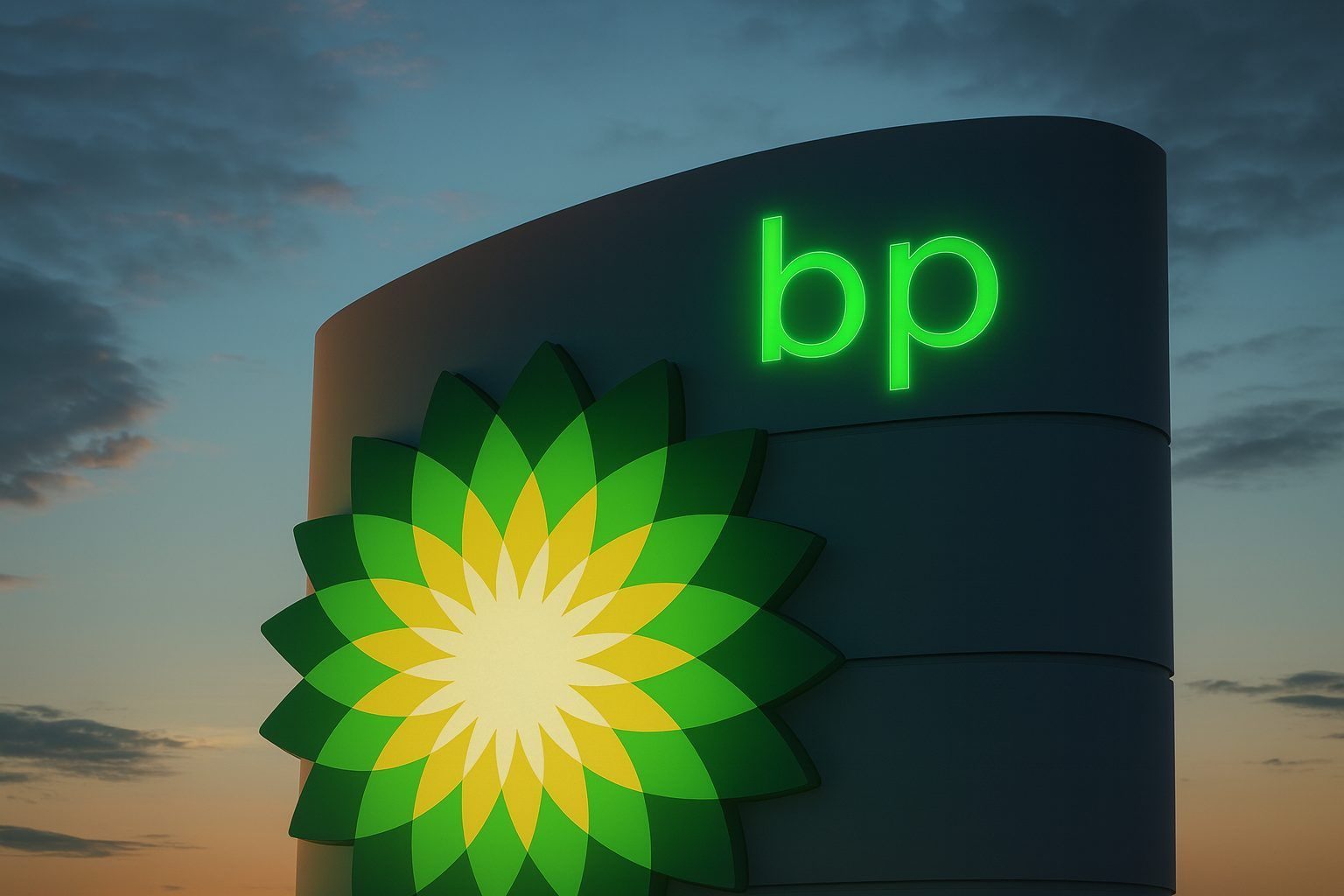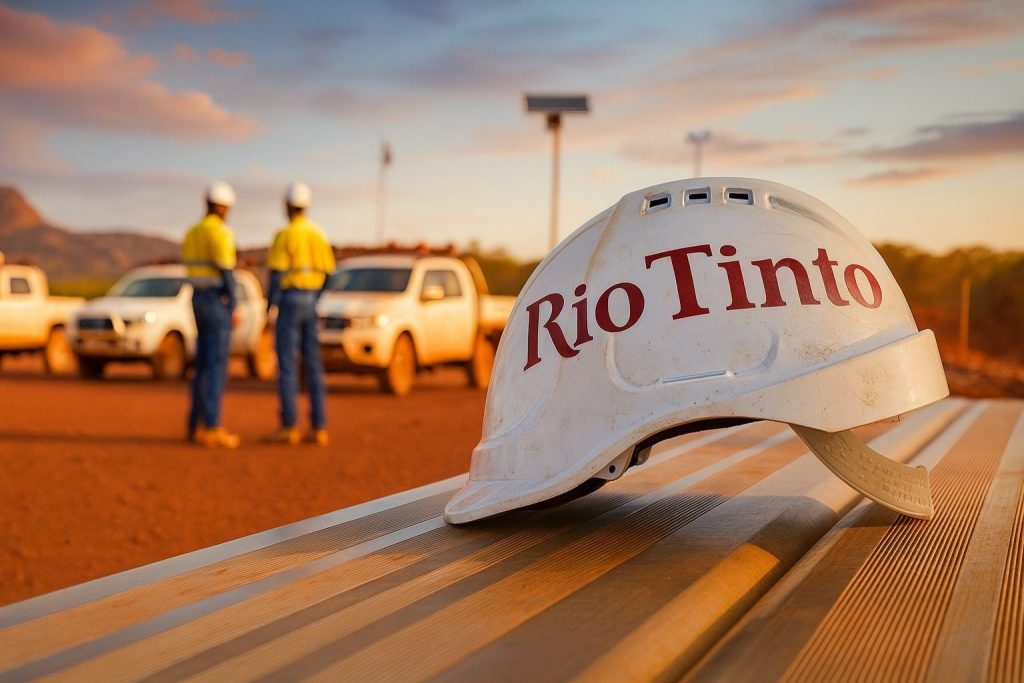BP shares are trading lower today as investors weigh ongoing disruption from the Olympic Pipeline leak in Washington State against the restart of the company’s largest US refinery and a surge of new oil and gas projects coming online in 2025.
BP share price today: softer energy sector weighs
As of Thursday trading in London, BP shares are changing hands around 447.8p, down about 1.1% on the day, with an intraday range of 446.75p–451.80p and a 52‑week range of 329.25p–476.20p. [1]
A broad drop in energy names is adding pressure. The FTSE 100 is down roughly 0.3% today, with the energy sub‑index off about 0.9% as oil prices slip on expectations that a Ukraine‑Russia ceasefire could unlock more supply. BP shares are cited among the fallers, down about 1.2% in morning trade. [2]
Despite today’s pullback, BP stock has still gained about 22–23% over the past 12 months, outpacing some global oil majors, according to analysis referenced by Zacks Investment Research. [3] Analyst data from Investing.com shows an average 12‑month price target of 472p, implying modest upside of around 5–6%, and a dividend yield near 5.6%, keeping BP firmly in the FTSE 100’s income camp. [4]
Olympic Pipeline leak: partial restart but full repairs still ahead
One of the key operational stories hanging over BP this week is the Olympic Pipeline leak in Washington State, which has drawn regulatory scrutiny and triggered emergency fuel measures in the Pacific Northwest.
What happened
- The 400‑mile Olympic Pipeline, operated by BP Pipelines North America, transports gasoline, diesel and jet fuel from northern Washington down to Oregon and supplies more than 90% of Oregon’s transportation fuels. [5]
- A leak was first detected on 11 November near an agricultural area east of Everett, Washington, after a sheen was spotted in a drainage ditch. [6]
- BP shut the system and began 24‑hour excavation and inspection to locate the source, digging more than 200 feet of pipeline. [7]
By 24 November, Reuters reported that the pipeline remained shut and that both Oregon and Washington had declared emergency measures in response to potential fuel shortages, particularly for jet fuel into Seattle‑Tacoma International Airport (Sea‑Tac). Airlines including Delta and Alaska Airlines brought in fuel by truck, added extra refuelling stops and tankered fuel on inbound flights to limit disruption. [8]
Partial restart eases jet fuel worries
Local reporting from Snohomish County now suggests a partial turning point:
- BP has identified the source of the leak in the line carrying gasoline, not in the line carrying jet fuel. [9]
- The jet‑fuel line has been reopened, restoring direct supply to Sea‑Tac, while the gasoline line remains shut for repairs with no firm restart date. [10]
- Washington’s governor and federal agencies continue to oversee cleanup and investigation; officials say there is no impact on regional waters, though soil remediation and monitoring are ongoing. [11]
The Lynnwood Times notes that this is the fourth leak on the Olympic system since 2020, and points out that penalties for past incidents have reached into the millions of dollars. [12] That history, combined with the current leak, underscores BP’s exposure to operational and regulatory risk on critical infrastructure even as it pushes a growth strategy in upstream oil and gas.
Whiting refinery back to normal after October fire
In more positive news for BP’s US operations, the company’s 440,000 barrel‑per‑day Whiting refinery in Indiana — the largest in the US Midwest — has now returned to normal operations following a fire in October and an extended maintenance turnaround. [13]
Key details from Reuters:
- Whiting underwent planned maintenance on major units, including its fluid catalytic cracker, starting in mid‑September.
- An operational incident in October triggered a fire, forcing several units offline.
- A separate external power disruption caused a temporary evacuation shortly afterwards.
- The refinery resumed full operations earlier this week, though BP has not commented on day‑to‑day activity. [14]
Whiting produces gasoline, diesel and jet fuel for the Midwest; returning to full capacity should help offset some of the regional tightness caused by the Olympic Pipeline disruption and support BP’s downstream earnings as it moves into the winter demand season. [15]
Strategy in action: six new projects online in 2025
While near‑term headlines centre on pipelines and refineries, BP is also highlighting a busy year for project delivery, emphasising growth and returns from traditional oil and gas.
A corporate feature republished today details how BP hit its target of six major project start‑ups in 2025, expected to add roughly 150,000 barrels of oil equivalent per day (boe/d) of net peak production. [16] These are spread across five regions:
- Murlach (UK North Sea) – subsea tieback feeding the long‑running ETAP hub, with expected peak production of about 15,000 boe/d net. [17]
- Cypre (Trinidad & Tobago) – tied into the existing Juniper platform, targeting roughly 45,000 boe/d net at peak. [18]
- Argos Southwest Extension (US Gulf of Mexico) – an extension of the Argos platform adding around 10,000 boe/d net; BP says it reached first oil just 25 months after discovery and about seven months ahead of schedule. [19]
- Raven Infills (Egypt) – new gas wells tied into the West Nile Delta development with anticipated peak production of about 20,000 boe/d net. [20]
- Greater Tortue Ahmeyim (Mauritania & Senegal) – a flagship LNG project combining ultra‑deepwater subsea systems, a large FPSO, and a floating LNG facility; BP says operations are running ahead of plan in their first year. [21]
- Mento (Trinidad & Tobago) – a 50–50 joint venture with EOG Resources, expanding gas supply off Trinidad’s southeast coast. [22]
BP executives argue that delivering complex projects safely and early is a key part of their promise to grow both production and shareholder returns following the company’s 2025 “strategic reset”. [23]
Next wave: Seatrium wins $5bn Tiber FPU contract
The growth story extends further into the next decade. Singapore’s Seatrium shipyard has secured a contract from BP for the engineering, procurement, construction and onshore commissioning of the Tiber floating production unit (FPU) in the US Gulf of Mexico. [24]
According to Splash247:
- Tiber is a $5 billion deepwater project producing from the Tiber and Guadalupe fields in the Keathley Canyon area, around 480km southwest of New Orleans.
- The FPU is designed for 80,000 barrels of oil per day of production capacity.
- First oil is targeted for 2030.
- Over 85% of the design will replicate BP’s Kaskida FPU, using a “series build” approach to cut costs and execution risk. [25]
The contract follows BP’s final investment decision on Tiber in late September and illustrates how the company is doubling down on high‑impact deepwater projects even as it trims parts of its low‑carbon spending plan.
Financial backdrop: Q3 beat, $750m buyback and divestments
Today’s share‑price moves play out against a backdrop of what many analysts saw as a strong third‑quarter performance.
From BP’s Q3 2025 results and market coverage:
- Reported profit for the quarter was about $1.2 billion, down from $1.6 billion in Q2, reflecting lower oil prices. [26]
- Underlying replacement cost profit — BP’s preferred measure — came in around $2.21 billion, beating consensus expectations of roughly $2.0–2.02 billion, helped by strong refining margins and a robust gas business. [27]
- Operating cash flow rose to roughly $7.8 billion, while net debt held near $26 billion, with a target to cut this to $14–18 billion by 2027. [28]
- BP maintained its quarterly share buyback at $750 million, announcing a new programme to run up to February 2026, explicitly aimed at reducing the share count. [29]
- The company also declared a dividend of 8.320 cents per ordinary share for the quarter. [30]
On the portfolio side, BP continues to prune assets. In early November, the Wall Street Journal reported that BP agreed to sell stakes in several US midstream assets to Sixth Street for about $1.5 billion, with proceeds helping to fund debt reduction and share buybacks as part of a broader $20 billion divestment plan through 2027. [31]
Investor debate: capital discipline vs upstream expansion
Not everyone is convinced BP’s renewed emphasis on upstream spending is the right path.
New research from the Australasian Centre for Corporate Responsibility (ACCR) this week argues that BP’s $22 billion of conventional greenfield capex over the last six years has generated only about $0.9 billion in value under forward price assumptions. [32]
Key conclusions from the ACCR report:
- BP’s total shareholder returns have lagged both the market and peers over 3, 5, 10 and 15 years.
- The organisation estimates BP could be around $11 billion more valuable today had it stopped sanctioning new conventional oil and gas projects and focused on producing existing reserves.
- BP’s portfolio of conventional projects awaiting final investment decision is, on average, higher cost than much of the global supply curve — particularly in gas, where ACCR says BP’s pre‑FID assets are more expensive than roughly three‑quarters of comparable projects. [33]
ACCR and several institutional investors quoted in the report are pressing BP to tighten its investment framework, arguing that ramping up exploration and upstream capex could erode value and heighten transition risk if future prices disappoint or policies tighten. [34]
BP, for its part, has framed its 2025 reset as a balance between higher‑return hydrocarbons and a more focused low‑carbon portfolio, with management emphasising project delivery, operational reliability and shareholder distributions as proof the turnaround is gaining traction. [35]
What today’s mix of news means for BP
For readers watching BP PLC on 27 November 2025, the picture is mixed:
Positives
- Operational recovery: Whiting’s return to normal operations boosts downstream capacity in a core market after a disruptive autumn. [36]
- Growth delivery: Six 2025 start‑ups and the Tiber FPU contract strengthen BP’s medium‑to‑long‑term production outlook, particularly in advantaged deepwater and gas projects. [37]
- Shareholder returns: Ongoing $750m quarterly buybacks and a dividend yield around 5.6% keep BP squarely positioned as an income and capital‑return story. [38]
Risks and overhangs
- Pipeline reliability & regulation: The Olympic Pipeline leak highlights operational and legal risks; the gasoline line remains shut and BP faces potential penalties in a system with a history of incidents. [39]
- Strategic scrutiny: Investor groups like ACCR question whether expanding conventional upstream capex is compatible with both value creation and the energy transition, keeping pressure on management’s strategy. [40]
- Macro headwinds: Today’s decline in oil prices and UK energy stocks shows how quickly sentiment can shift on geopolitical news and macro expectations. [41]
For now, BP remains one of the FTSE 100’s most actively watched names, sitting at the crossroads of energy security, climate policy and shareholder activism. Investors and observers will be looking for further clarity on three fronts in the coming weeks:
- Full restoration and investigation outcomes on the Olympic Pipeline.
- Capital allocation signals — including any asset sales or changes to buybacks — as BP heads towards its next earnings update in early 2026. [42]
- How new projects ramp up through 2026 and whether they deliver the promised returns in a volatile commodity environment. [43]
As always, this article is for information only and does not constitute investment advice. Anyone considering BP shares should take into account their own financial situation, risk tolerance and, ideally, seek professional guidance.
References
1. www.investing.com, 2. www.reuters.com, 3. finance.yahoo.com, 4. www.investing.com, 5. www.reuters.com, 6. lynnwoodtimes.com, 7. www.reuters.com, 8. www.reuters.com, 9. lynnwoodtimes.com, 10. lynnwoodtimes.com, 11. lynnwoodtimes.com, 12. lynnwoodtimes.com, 13. www.reuters.com, 14. www.reuters.com, 15. www.reuters.com, 16. cyprusshippingnews.com, 17. cyprusshippingnews.com, 18. cyprusshippingnews.com, 19. cyprusshippingnews.com, 20. cyprusshippingnews.com, 21. cyprusshippingnews.com, 22. cyprusshippingnews.com, 23. cyprusshippingnews.com, 24. splash247.com, 25. splash247.com, 26. www.bp.com, 27. www.reuters.com, 28. www.reuters.com, 29. markets.ft.com, 30. www.bp.com, 31. www.wsj.com, 32. www.accr.org.au, 33. www.accr.org.au, 34. www.accr.org.au, 35. www.bp.com, 36. www.reuters.com, 37. cyprusshippingnews.com, 38. markets.ft.com, 39. www.reuters.com, 40. www.accr.org.au, 41. www.reuters.com, 42. finance.yahoo.com, 43. cyprusshippingnews.com








